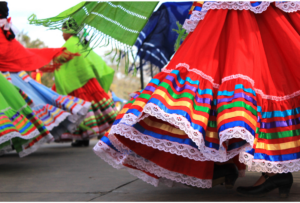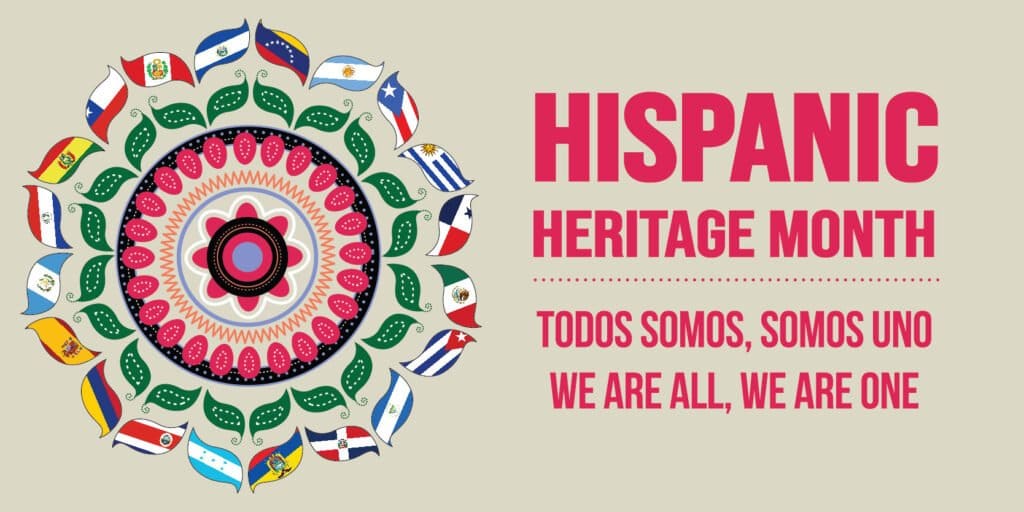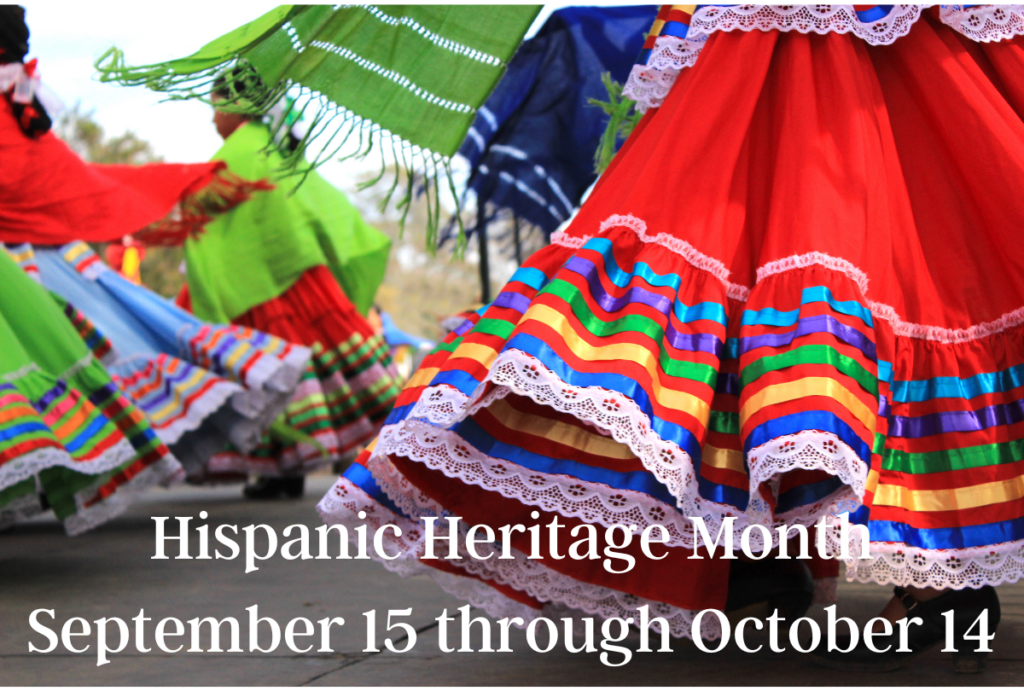More Than Just a COLORFUL Skirt

A few weeks into the school year, on September 15th, public schools, organizations and companies around the country celebrate the historical contributions of what is today the fastest growing ethnic group in our nation – Hispanics. Over 42% of the U.S. population today is nonWhite, and students of color are now the majority of public school students at 54%. Hispanics alone constitute 20% of the total U.S. population. Because of the pace of growth amongst Hispanic groups, we see market responses from businesses, to media and marketing campaigns, to schools, to politics. But do not be misled by the glossy, celebratory ads and Hispanic-centric goods increasing on shelves in stores. The Hispanic or Latinx accent, culture, food, arts and stories were once a thing of disdain in this country rather than a historical celebration, and there is a small vocal minority that would like to reinforce this bias.
National Hispanic Heritage Month is an annual celebration that honors the history, culture, and contributions of Hispanic and Latino Americans in the United States. The origins of this month-long celebration can be traced back to 1968 when President Lyndon B. Johnson first established Hispanic Heritage Week. This week included September 15th and 16th, which marks the independence anniversaries of several Latin American countries, including Mexico, Costa Rica, El Salvador, Guatemala, and Honduras (although it ignores others). The initiative aimed to recognize and appreciate the rich diversity and contributions of Hispanic individuals in American society. In 1988, under President Ronald Reagan, Hispanic Heritage Week was expanded to a month-long celebration, starting on September 15th and ending on October 15th. I always thought that the straddling of two months was appropriately symbolic of how Hispanics have had to straddle a history of being part of two worlds in this one country.
 Hispanics are a very diverse group of people. While Mexicans make up the largest group within the population of Hispanics, there are 27 other recognized Hispanic groups in the U.S. Therefore, as you look to celebrate culture and contributions, don’t forget to also tell the deeper stories of the Hispanic subgroups that are part of your community. Authentic stories and celebrations of contributions to science, technology, medicine, the arts, and other construction of knowledge and community creates the opportunity to get to know groups of people more authentically rather than in some easy-to-capture aggregate. Therefore, teach students to ask which Hispanic country is being represented by the lesson and encourage them to be curious about whether the people in their lesson are from a lineage of those who were part of the first nations in the U.S., “acquired” through territorial annexations, or newer arrivals like most of our nation. The real stories are found in understanding the throughlines of U.S. history.
Hispanics are a very diverse group of people. While Mexicans make up the largest group within the population of Hispanics, there are 27 other recognized Hispanic groups in the U.S. Therefore, as you look to celebrate culture and contributions, don’t forget to also tell the deeper stories of the Hispanic subgroups that are part of your community. Authentic stories and celebrations of contributions to science, technology, medicine, the arts, and other construction of knowledge and community creates the opportunity to get to know groups of people more authentically rather than in some easy-to-capture aggregate. Therefore, teach students to ask which Hispanic country is being represented by the lesson and encourage them to be curious about whether the people in their lesson are from a lineage of those who were part of the first nations in the U.S., “acquired” through territorial annexations, or newer arrivals like most of our nation. The real stories are found in understanding the throughlines of U.S. history.
As a Puerto Rican raised in the South Bronx, Hispanic Heritage celebrations were a point of personal and community pride, and more importantly were an extension of the lessons we received year round (not just in September) about diverse contributors to the economic and cultural history of the United States. In my elementary school, all students took a Latino History class and a Black History class. It was the highlight of fifth grade. We were all Black and Latino, so it makes sense right? Yet by today’s political standards, teachers back then would have been charged with criminal activity for being inclusive and teaching children of color that we had a rich history of contributions to be honored and told. Our students deserve to learn each other’s rich stories. We should not apologize for seeing the worth in all people that built this nation.


